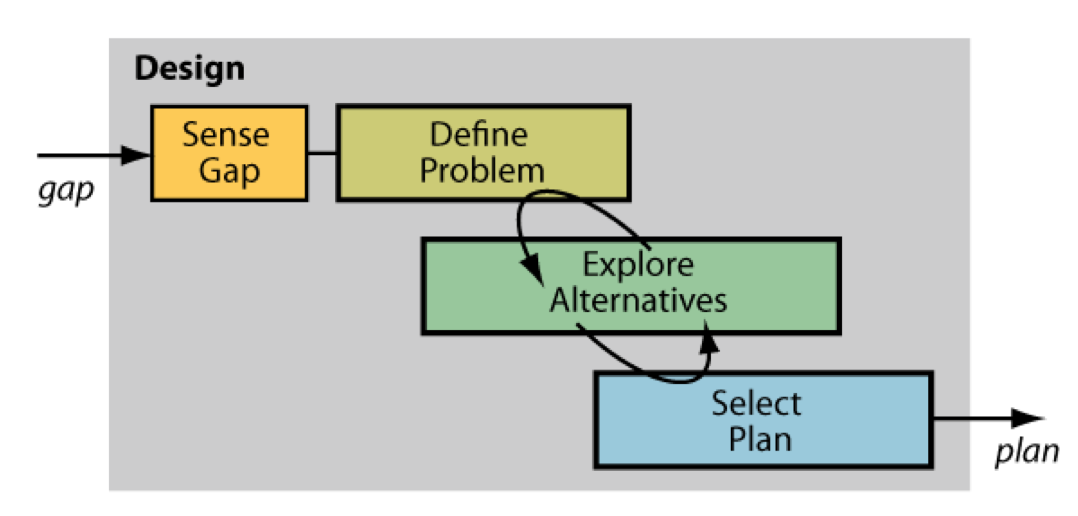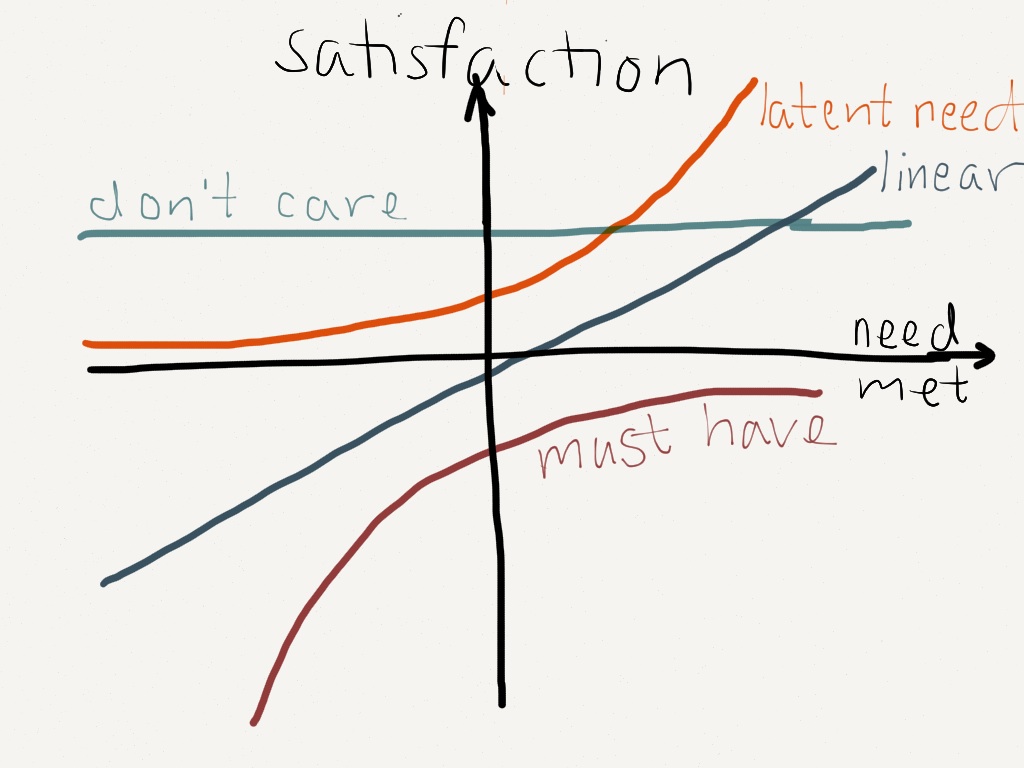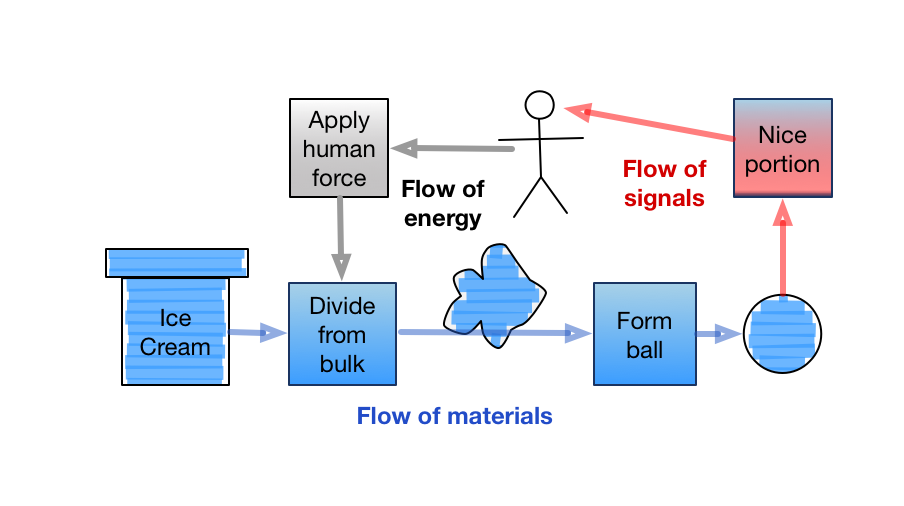Class is archived in Coursera class archive.
Assignments were delivered via blog-posts on weebly.
Design Process (Week 1)
gap → (sense gap) → (define problem) → (explore alternatives) → (select plan) → plan
Usually iterate through process.

Finding Gaps
List annoyances that has occurred to me the last days.
How to identify needs
1 Connect with users
* Observe in use environment, look for
- Awkvard actions
- Homemade solutions
- Signs (written)
- Frustration
- Inefficiencies
- Errors
* Interview, 1-on-1 in use environment, make an open-ended discussion
- Show me...
- Why did you choose
- What did you like about
- What don´t you like
- Suggest improvements
- What issues do you consider
- Observe non-verbal info
2 Collect raw data
3 Code data into needs statements
* as specific as raw data
* without implying a design concept: -has a strap for long objects-
* need as attribute: -object is stowed- ⇒ subject stows object
* avoid must and should (establish importance)
* arrange hierarchically
4 Flag latent needs
5 Establish relative importance of needs
Types of needs

Problem Statement Articulated Using “5 Whys” (Week 2)
why ↑ generalize
how ↓ specialize
Explore Alternatives (Week 3)
Decompose by Function
A function diagram decomposes functions into flows of: * Energy * Materials * Signals

Pick 2-3 functions.
Example: “Divide from bulk”:
* twist
* squeeze
* hammer
* push
* pull
* step
* pedaling
Combine from 2 functions.
Example: pull + shave (scoop).
Decompose by Sequence
Example: flow diagram for car rental: shop → book → pick-up → use → drop-off
Look for improvements of each step.
Decompose by User Needs
Decompose by key / latent needs.
Then combine.
Example: “Cart as table” + “Cart navigates curbs”
Exploration (Week 4)
Sketch 10 Concepts
Concept Selection Matrix
User need | A | B | C | … | Portability | 1 | 0 | -1 | | Roomy | -1 | 1 | -1 | | Cost | 1 | 1 | -1 | | Wow | 0 | -1 | -1 | | Elegance | -1 | 1 | -1 | | Sum | 0 | 2 | -5 | |
Concepts are scored -1, 0 or 1.
The Concept Scoring Matrix lets you assign weight to needs, and grade concepts on a scale 1-5.
Prototyping
Focused vs. Comprehensive, Analytical vs. Physical Prototypes
Concept testing (Week 5)
Test the 3 top concepts.
Innovation tournaments
Aestetics (Week 6)
Name Design (Week 7)
* What is named: product, service or organization
* Do I need internet domain name
* What attributes do I want to evoke
* Some or all standard needs:
- Evokes the thing
- Positive associations
- Easy to say
- Memorable
- Unambiguous spelling
- Legal and practical constraints (domain, copyright)
Decomposition 1 Generate list of chunks
* Dictionary words
- saddle, seat
- soft, fast
* Proper nouns and derivatives
- Bentley
- Swiss
* Other roots (latin/greek)
- velo
- stadio
* Affixes
- pro...
- neo...
Decomposition 2 Manipulate chunks
Name Selection Matrix
User need | Length | Assoc. | Spelling | Tone | Easy to say | Sum | Werkbank | 3 | 2 | 2 | 3 | 2 | 12 | Flexibench | 3 | 2 | 2 | 1 | 3 | 11 |
Production (Week 8)
Supply chain, product teardown.